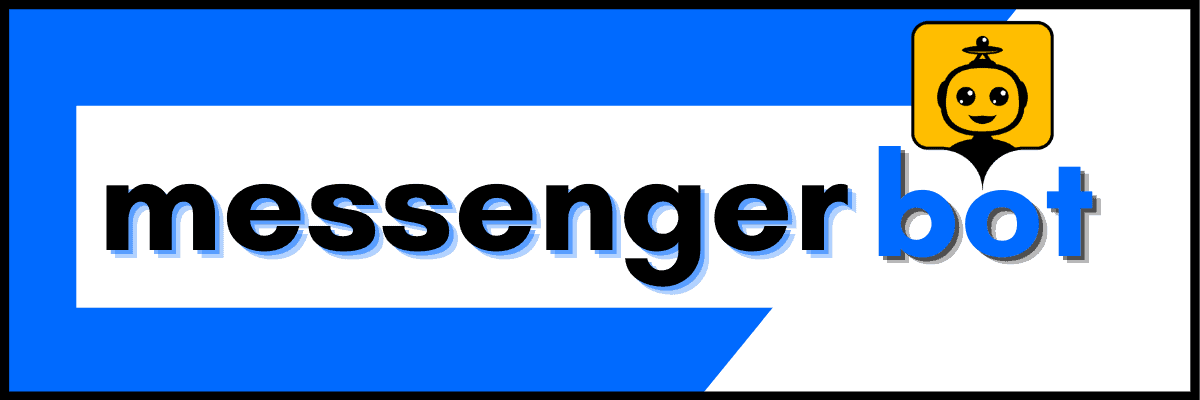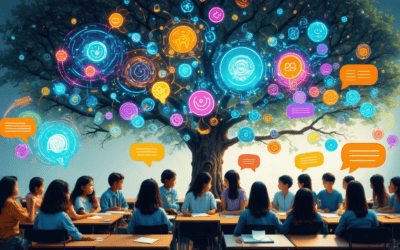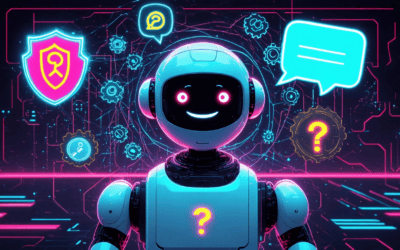In the rapidly evolving landscape of artificial intelligence, understanding how to test a chatbot effectively has become paramount. This article delves into the intricate world of chatbot testing, exploring essential methodologies and insights that can enhance AI performance. We will examine the significance of the Turing test in evaluating AI intelligence, discuss various free platforms for testing chatbots online, and highlight key metrics that define a successful chatbot test. Additionally, we’ll provide a comprehensive checklist for quality assurance in AI chatbot testing and share strategies for challenging chatbots to ensure they meet user expectations. Join us as we navigate through these critical aspects of chatbot testing, equipping you with the knowledge to assess and improve your AI solutions effectively.
Understanding the Importance of Chatbot Testing
Testing a chatbot is a critical component in the development of artificial intelligence systems. It ensures that the chatbot functions as intended, providing users with a seamless experience while effectively managing interactions. As businesses increasingly rely on chatbots for customer engagement, understanding the importance of chatbot testing becomes paramount. This process not only enhances user satisfaction but also optimizes the chatbot’s performance, making it a vital aspect of AI development.
The role of chatbot testing in AI development
Chatbot testing plays a significant role in the overall lifecycle of AI development. By rigorously evaluating a chatbot’s capabilities, developers can identify and rectify issues before deployment. This proactive approach minimizes the risk of user frustration and enhances the chatbot’s reliability. Key areas of focus during testing include:
- Input Variability Testing: Sending a variety of invalid or unexpected questions helps evaluate how the chatbot responds. This includes checking for typos, slang, and ambiguous queries.
- Error Handling Assessment: Assessing the chatbot’s ability to manage errors gracefully ensures it can redirect users to human support when necessary.
- Functionality Testing: Testing all features, including buttons and quick replies, ensures that each function works as intended.
- User Experience Evaluation: Analyzing conversational flow and tone helps maintain brand voice and context throughout interactions.
- Performance Metrics: Measuring response times and accuracy is crucial for a well-performing chatbot.
- Integration Testing: Ensuring the chatbot functions correctly within platforms like Messenger is essential for user satisfaction.
- User Feedback Collection: Implementing mechanisms for user feedback allows for continuous improvement.
By focusing on these areas, businesses can ensure their chatbots not only meet user expectations but also contribute positively to their brand image.
Key metrics for evaluating chatbot performance
To effectively evaluate chatbot performance, several key metrics should be considered. These metrics provide insights into how well the chatbot meets user needs and expectations:
- Response Time: The speed at which the chatbot responds to user inquiries is crucial. A quick response time enhances user satisfaction and engagement.
- Accuracy of Responses: Measuring how accurately the chatbot answers questions helps identify areas for improvement. High accuracy is essential for maintaining user trust.
- User Retention Rate: Tracking how many users return to interact with the chatbot can indicate its effectiveness in providing value.
- Engagement Metrics: Analyzing user interactions, such as the number of messages exchanged, can provide insights into the chatbot’s ability to maintain conversations.
- Feedback Scores: Collecting user feedback through ratings or surveys helps gauge overall satisfaction and areas needing enhancement.
By monitoring these metrics, businesses can continuously refine their chatbot’s performance, ensuring it remains an effective tool for customer engagement. For more detailed insights on chatbot testing methodologies, you can explore resources available at Messenger Bot Tutorials.

Understanding the Importance of Chatbot Testing
Testing a chatbot is a critical step in ensuring its effectiveness and reliability in real-world applications. As AI technology continues to evolve, the role of chatbot testing in AI development becomes increasingly significant. By rigorously evaluating a chatbot’s performance, developers can identify areas for improvement, enhance user experience, and ensure that the chatbot meets the desired objectives.
The Role of Chatbot Testing in AI Development
Chatbot testing serves as a foundation for successful AI deployment. It allows developers to assess how well the chatbot understands user queries and responds appropriately. This process involves various testing methodologies, including chatbot testing tutorials that guide users through effective evaluation techniques. By conducting thorough tests, developers can ensure that their chatbots are not only functional but also capable of engaging users in meaningful conversations.
Key Metrics for Evaluating Chatbot Performance
When testing a chatbot, several key metrics should be considered to gauge its performance effectively:
- Response Accuracy: Measure how accurately the chatbot understands and responds to user inquiries. High accuracy indicates a well-trained AI model.
- User Satisfaction: Collect feedback from users to determine their satisfaction levels with the chatbot’s responses. This can be done through surveys or direct feedback mechanisms.
- Engagement Rate: Analyze how often users interact with the chatbot and the duration of these interactions. A higher engagement rate suggests that users find the chatbot valuable.
- Fallback Rate: Track how often the chatbot fails to provide a satisfactory response and resorts to fallback messages. A lower fallback rate is indicative of a more effective chatbot.
By focusing on these metrics, developers can refine their chatbots to better meet user needs and expectations. For those interested in exploring free chatbot testing options, many platforms provide essential features that allow users to test chatbots online without incurring costs.
The Turing Test and Its Relevance in Chatbot Evaluation
The Turing test remains a pivotal benchmark in the evaluation of chatbots and their AI intelligence. This test, proposed by Alan Turing in 1950, assesses a machine’s ability to exhibit intelligent behavior indistinguishable from that of a human. Understanding its historical context and implications is essential for anyone involved in chatbot testing.
Historical Context of the Turing Test in AI
The Turing test was designed to evaluate a machine’s conversational capabilities. Over the years, various chatbots have attempted to pass this test, with mixed results. One notable example is Eugene Goostman, a chatbot that gained attention for allegedly passing the Turing test in 2014. Eugene simulates a 13-year-old boy from Ukraine, allowing it to navigate conversations with a degree of ambiguity that can mislead human judges.
However, the claim that Eugene truly passed the Turing test is contentious. The test’s criteria can vary, and many experts argue that Eugene’s success was more a result of clever programming and the limitations of the test itself rather than genuine human-like intelligence. For instance, during a competition at the Royal Society in London, Eugene reportedly convinced 33% of judges that it was human, but critics highlight that this does not equate to true understanding or consciousness.
In addition to Eugene, other chatbots, such as the Messenger Bot, have also been developed with advanced conversational capabilities. While these bots have not officially passed the Turing test, they demonstrate significant progress in natural language processing and user interaction, showcasing the evolving landscape of AI communication.
Notable Chatbots That Have Attempted the Turing Test
Several chatbots have made headlines for their attempts to pass the Turing test. Alongside Eugene Goostman, other notable examples include:
- ELIZA: One of the earliest chatbots, developed in the 1960s, which mimicked a psychotherapist’s conversational style.
- ALICE: A chatbot that won the Loebner Prize multiple times, known for its natural language processing capabilities.
- IBM Watson: While not specifically designed for the Turing test, its advanced AI capabilities have sparked discussions about machine intelligence.
As the field of AI chatbot testing continues to evolve, the relevance of the Turing test remains a topic of debate among researchers and developers. For further reading on the Turing test and chatbot advancements, refer to the following sources:
- American Association for Artificial Intelligence
- Turing Test resources
- International Joint Conference on Artificial Intelligence
Quality Assurance in AI Chatbot Testing
Testing a chatbot is crucial for ensuring its effectiveness and user satisfaction. Quality assurance (QA) in AI chatbot testing involves a systematic approach to evaluate the chatbot’s performance, functionality, and user experience. By implementing a robust QA process, we can identify potential issues early and enhance the overall interaction quality.
Essential Components of a Chatbot Testing Checklist
- Define Specific Use Cases: Clearly outline the specific scenarios in which the chatbot will be utilized. This includes identifying the target audience, the types of inquiries the chatbot will handle, and the desired outcomes. According to a study by Gartner, defining use cases can significantly enhance user satisfaction and engagement.
- Develop a Proof of Concept (PoC): Create a PoC to test the chatbot’s functionality and effectiveness in real-world scenarios. This allows for early detection of issues and provides insights into user interactions. A well-structured PoC can help in refining the chatbot’s capabilities before full deployment.
- Deploy a Minimum Viable Product (MVP): Launch a simplified version of the chatbot that includes core functionalities. This MVP should be monitored closely to gather user feedback and performance metrics. Research indicates that iterative testing and deployment can lead to better user experiences and higher retention rates.
- Commit to Continuous Improvement: Establish a framework for ongoing evaluation and enhancement of the chatbot. This includes regular updates based on user feedback, performance analytics, and advancements in AI technology.
- Incorporate User Feedback Mechanisms: Implement features that allow users to provide feedback on their interactions with the chatbot. Engaging users in this way can lead to valuable insights that inform future updates.
- Utilize Analytics Tools: Leverage analytics tools to track user interactions, identify common queries, and measure satisfaction levels. Tools such as Google Analytics and chatbot-specific platforms can provide actionable data that informs QA processes.
- Test Across Multiple Platforms: Ensure the chatbot performs well across various platforms, including web, mobile, and messaging apps like Messenger Bot. Cross-platform testing helps identify inconsistencies and ensures a seamless user experience.
- Stay Updated with AI Trends: Keep abreast of the latest developments in AI and chatbot technology. Engaging with industry publications and attending relevant conferences can provide insights into best practices and emerging trends.
Common Chatbot Testing Scenarios to Consider
When conducting chatbot testing, it’s essential to explore various scenarios to ensure comprehensive evaluation:
- User Intent Recognition: Test how well the chatbot understands and responds to different user intents. This involves simulating various inquiries to assess the accuracy of the chatbot’s responses.
- Response Accuracy: Evaluate the correctness of the chatbot’s answers. This includes checking for factual accuracy and relevance to user queries.
- Conversation Flow: Analyze the natural flow of conversations. Ensure that the chatbot can handle follow-up questions and maintain context throughout the interaction.
- Error Handling: Test the chatbot’s ability to manage unexpected inputs or misunderstandings. This includes assessing how the chatbot responds to irrelevant or unclear queries.
- Performance Metrics: Monitor key performance indicators (KPIs) such as response time, user satisfaction ratings, and engagement levels to gauge overall effectiveness.
By thoroughly testing these scenarios, we can ensure that our chatbot not only meets user expectations but also excels in delivering high-quality interactions. For more insights on chatbot testing techniques, check out our chatbot testing tutorials.

Methods for Testing AI Chatbots
Testing a chatbot effectively is crucial for ensuring its performance and user satisfaction. By employing various methods, you can assess the chatbot’s capabilities and identify areas for improvement. Here are some key approaches to test chatbot functionality:
Overview of Chatbot Testing Tools Available
There are numerous tools available to test chatbots efficiently. These tools help automate the testing process, allowing for comprehensive evaluations of chatbot performance. Some popular options include:
- Chatbot Testing Frameworks: Tools like Botium and TestMyBot provide frameworks specifically designed for chatbot testing, enabling you to create test cases and automate interactions.
- Performance Monitoring Tools: Platforms such as Google Analytics and Mixpanel can track user interactions and engagement metrics, helping you assess how well your chatbot performs in real-world scenarios.
- AI Testing Platforms: Solutions like Brain Pod AI offer advanced testing capabilities, allowing you to evaluate AI models and their responses in various contexts.
Utilizing these tools can streamline the AI chatbot testing process and provide valuable insights into the chatbot’s effectiveness.
Chatbot Automation Testing Using Selenium
Selenium is a powerful tool for automating web applications, and it can also be utilized for chatbot testing. By simulating user interactions, you can evaluate how well your chatbot responds to different inputs. Here’s how to implement Selenium for chat bot testing:
- Set Up Selenium: Install Selenium WebDriver and configure it to interact with your chatbot interface.
- Create Test Scripts: Write scripts that simulate user queries and commands to assess the chatbot’s responses.
- Analyze Results: Review the output from your tests to identify any discrepancies or areas where the chatbot may need improvement.
By leveraging Selenium for chatbot automation testing, you can ensure that your chatbot delivers accurate and timely responses, enhancing user experience.
Strategies for Challenging Chatbots
Testing a chatbot’s capabilities can be an intriguing endeavor, especially when exploring how to outsmart it. Here are eight effective strategies to challenge a chatbot:
- Command the Chatbot to Reset or Start Over: Initiating a reset can disrupt the flow of conversation, forcing the chatbot to lose context and potentially misinterpret your next input.
- Incorporate Filler Language: Using filler phrases or irrelevant words can confuse the chatbot, making it difficult for the algorithm to parse your intent accurately.
- Engage with Display Button Prompts: Asking questions that align with the options presented on the display buttons can lead to unexpected responses, as chatbots often rely on predefined pathways.
- Provide Responses Beyond Pre-Selected Options: When prompted, respond with answers that fall outside the chatbot’s programmed responses. This can lead to errors in understanding and processing.
- Request Help or Assistance: Many chatbots are programmed to provide assistance, but asking for help in unconventional ways can lead to unexpected outcomes, revealing the limitations of their programming.
- Use Non-Traditional Answers: Responding with creative or humorous answers can confuse the chatbot, as it may not be equipped to handle such inputs effectively.
- Conclude the Conversation Abruptly: Saying goodbye or ending the conversation unexpectedly can disrupt the chatbot’s flow, leading to a failure in processing your previous interactions.
- Pose Unusual or Odd Questions: Asking bizarre or nonsensical questions can expose the limitations of the chatbot’s AI, as it may struggle to generate a coherent response.
By employing these strategies, users can effectively outsmart chatbots, revealing the boundaries of their programming and enhancing their understanding of AI limitations. For further insights into chatbot behavior and limitations, refer to studies from sources like the American Association for Artificial Intelligence and industry analyses from platforms like MIT Technology Review.
Analyzing Chatbot Responses for Improvement
To enhance the performance of chatbots, it is crucial to analyze their responses critically. Here are key aspects to consider:
- Response Accuracy: Evaluate how accurately the chatbot understands and responds to user queries. This can be measured through user feedback and interaction logs.
- Contextual Understanding: Assess the chatbot’s ability to maintain context throughout a conversation. A chatbot that can remember previous interactions will provide a more seamless user experience.
- Response Time: Monitor how quickly the chatbot responds to inquiries. Delays can frustrate users and lead to disengagement.
- Engagement Metrics: Analyze user engagement metrics, such as session duration and interaction frequency, to gauge the effectiveness of the chatbot in retaining user interest.
- Feedback Mechanisms: Implement feedback options for users to report issues or suggest improvements, which can help refine the chatbot’s capabilities over time.
By focusing on these areas, businesses can ensure their chatbots are continually improving, ultimately leading to better user satisfaction and engagement. For more information on chatbot testing and optimization, check out our chatbot testing tutorials.
How do you outsmart chatbot?
Outsmarting a chatbot involves employing specific strategies to test its limits and evaluate its intelligence. By understanding how chatbots function, you can effectively challenge their capabilities and identify areas for improvement. Here are some techniques to consider:
Techniques to test chatbot intelligence
- Use ambiguous language: Chatbots often struggle with context. By using vague or ambiguous phrases, you can see how well the chatbot interprets user intent.
- Ask complex questions: Pose multi-part questions or those requiring nuanced understanding. This can reveal the chatbot’s ability to process and respond accurately.
- Incorporate slang or idioms: Many chatbots are programmed with standard language. Using slang or idiomatic expressions can test their adaptability and comprehension.
- Challenge with contradictory statements: Present conflicting information to see how the chatbot reconciles the discrepancies in its responses.
Analyzing chatbot responses for improvement
After testing a chatbot, it’s crucial to analyze its responses to identify strengths and weaknesses. Here are some steps to follow:
- Evaluate accuracy: Check if the chatbot provided correct information or misinterpreted your queries.
- Assess response time: Measure how quickly the chatbot responds to inquiries, as delays can impact user experience.
- Identify gaps in knowledge: Note any areas where the chatbot failed to provide satisfactory answers, which can inform future training and updates.
- Gather user feedback: Encourage users to share their experiences with the chatbot, which can provide valuable insights into its performance.
By employing these strategies, you can effectively test chatbots and contribute to their ongoing development and refinement. For more information on enhancing chatbot capabilities, consider exploring resources on AI chat assistants or the Turing Test for further insights into chatbot intelligence evaluation.




